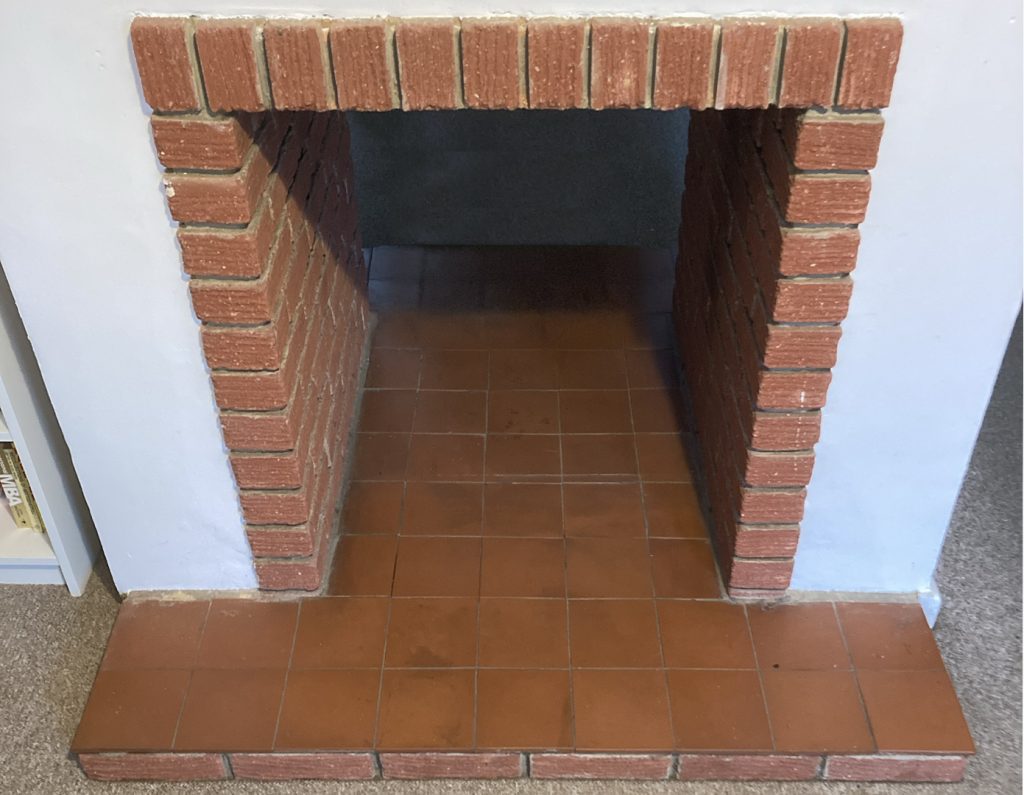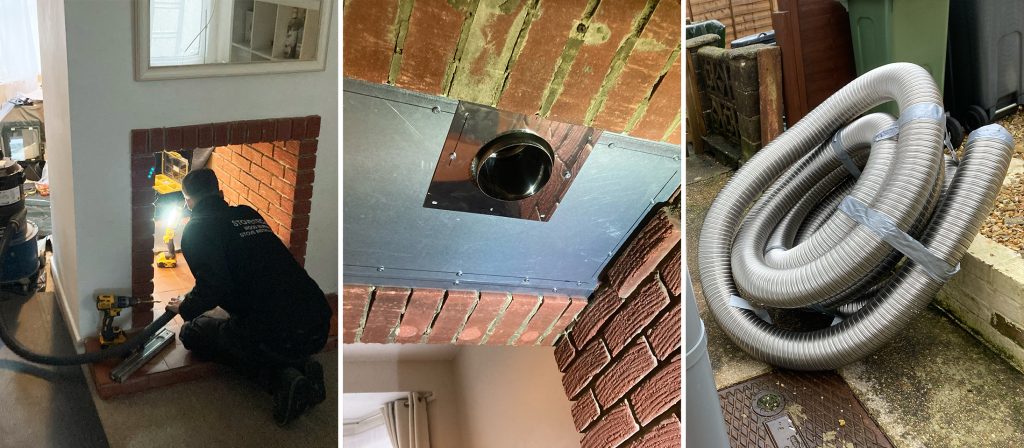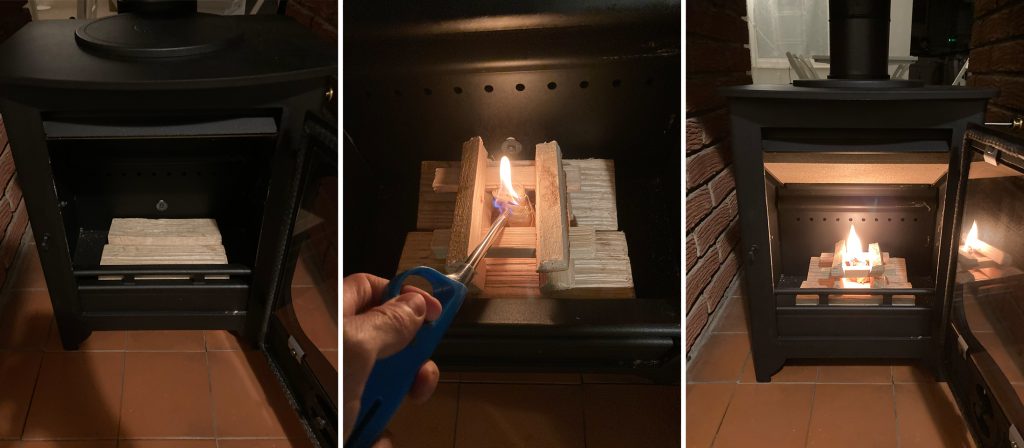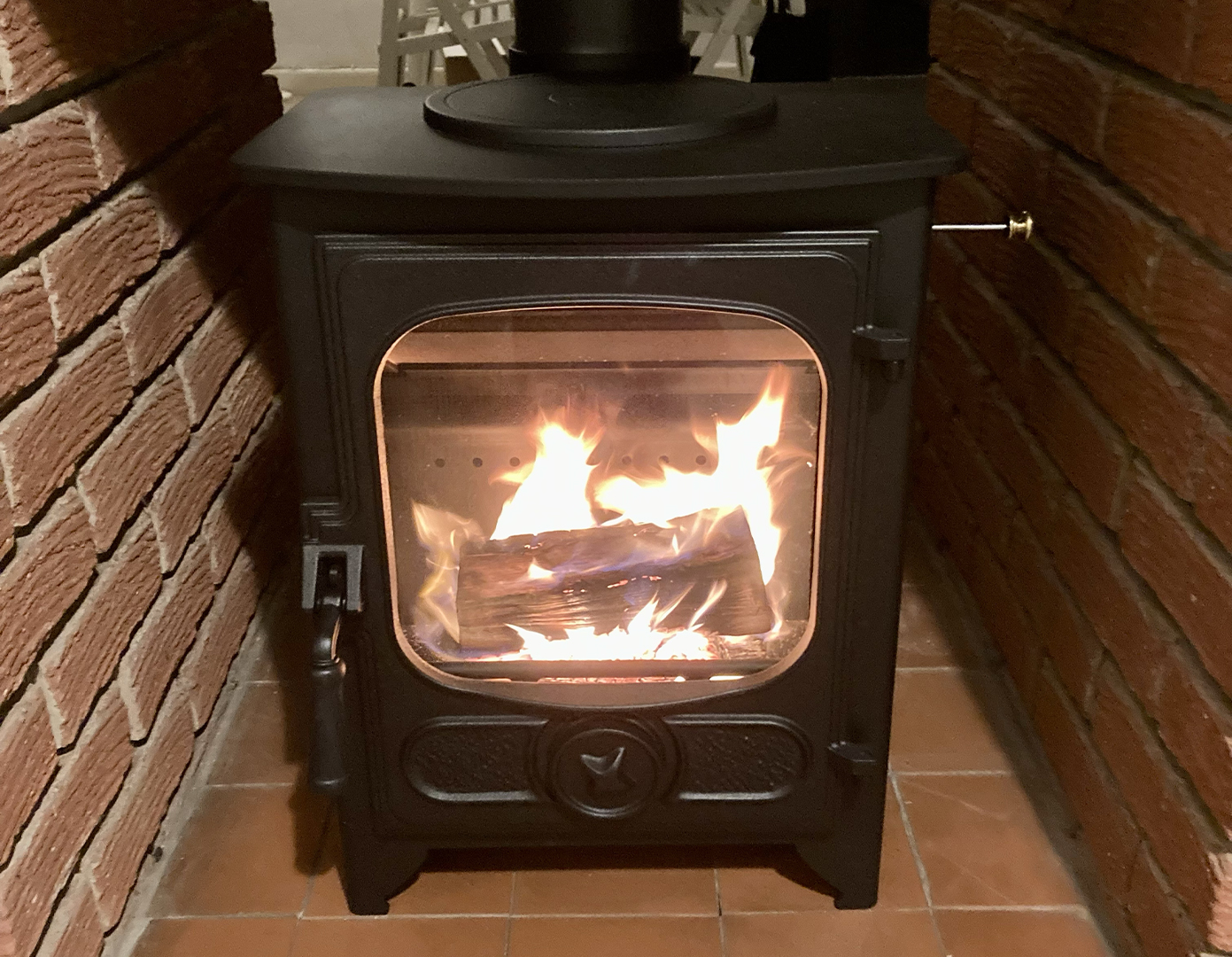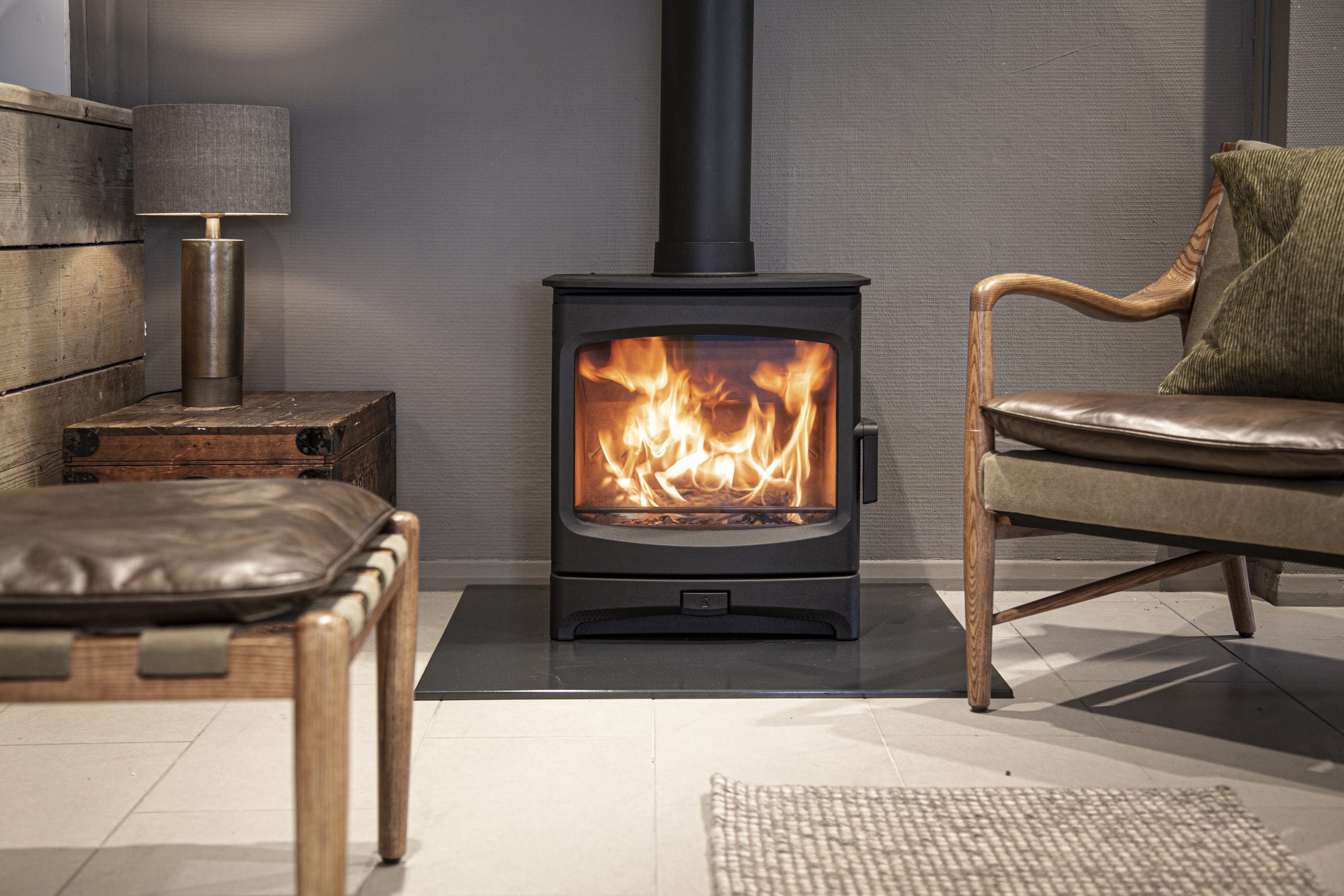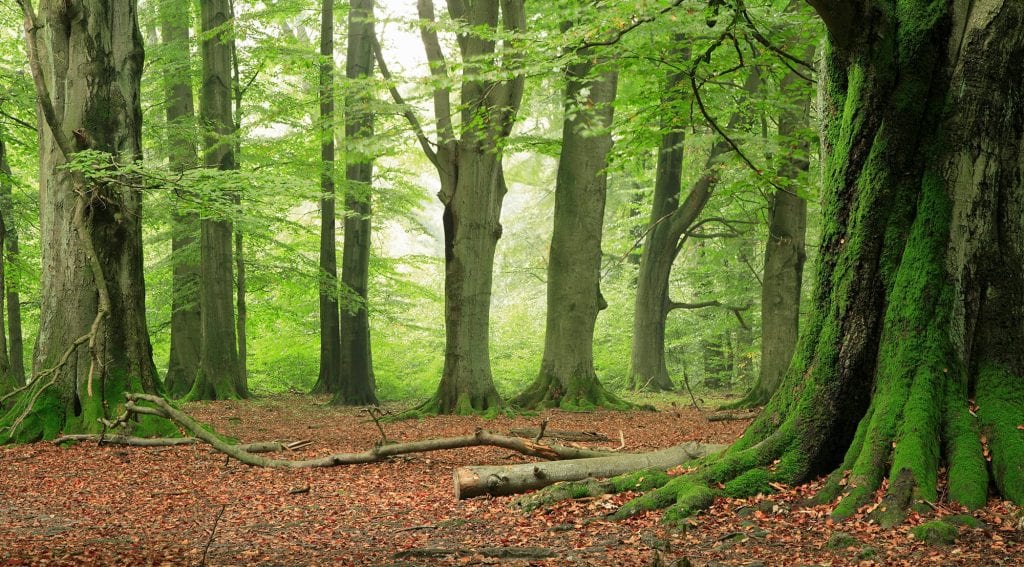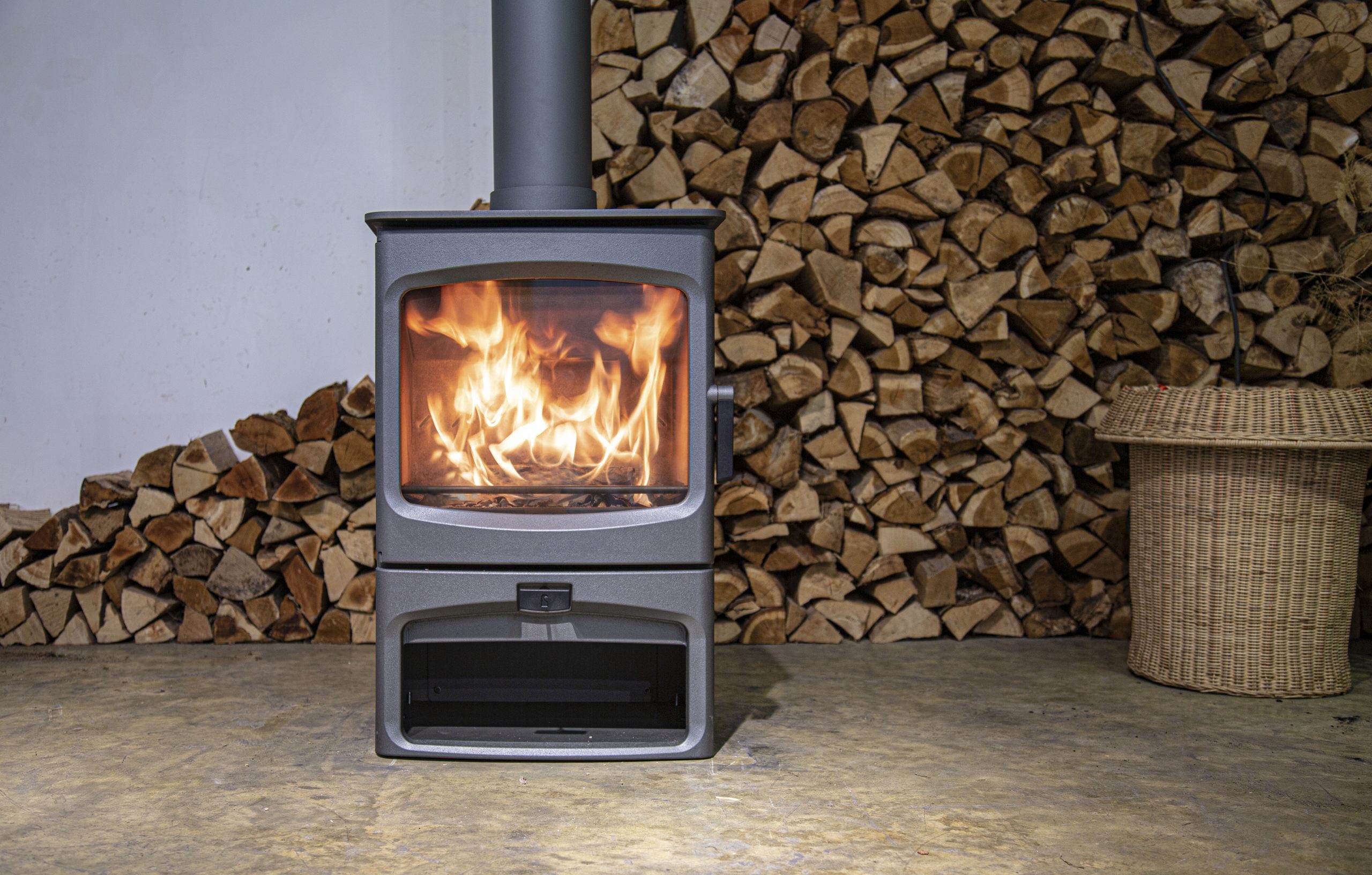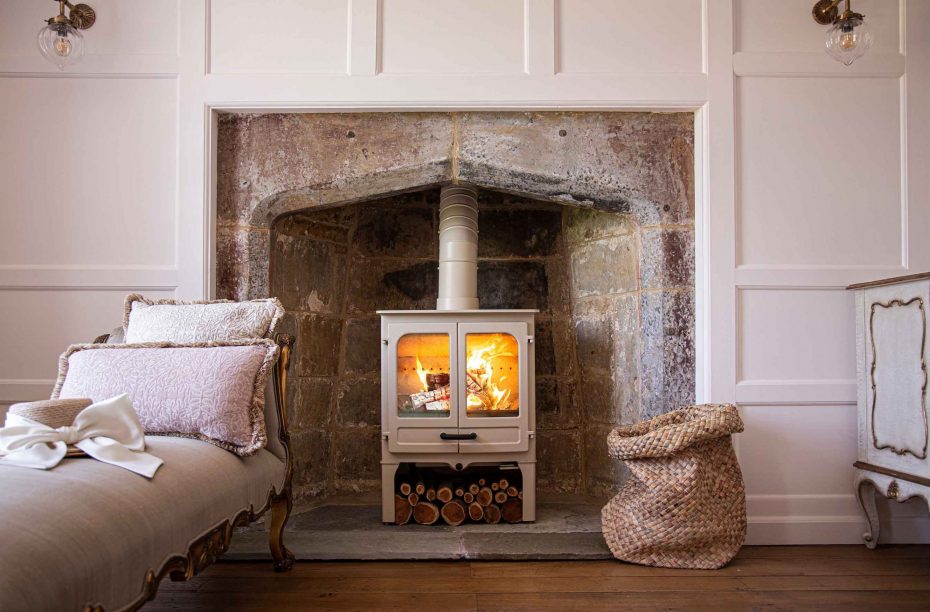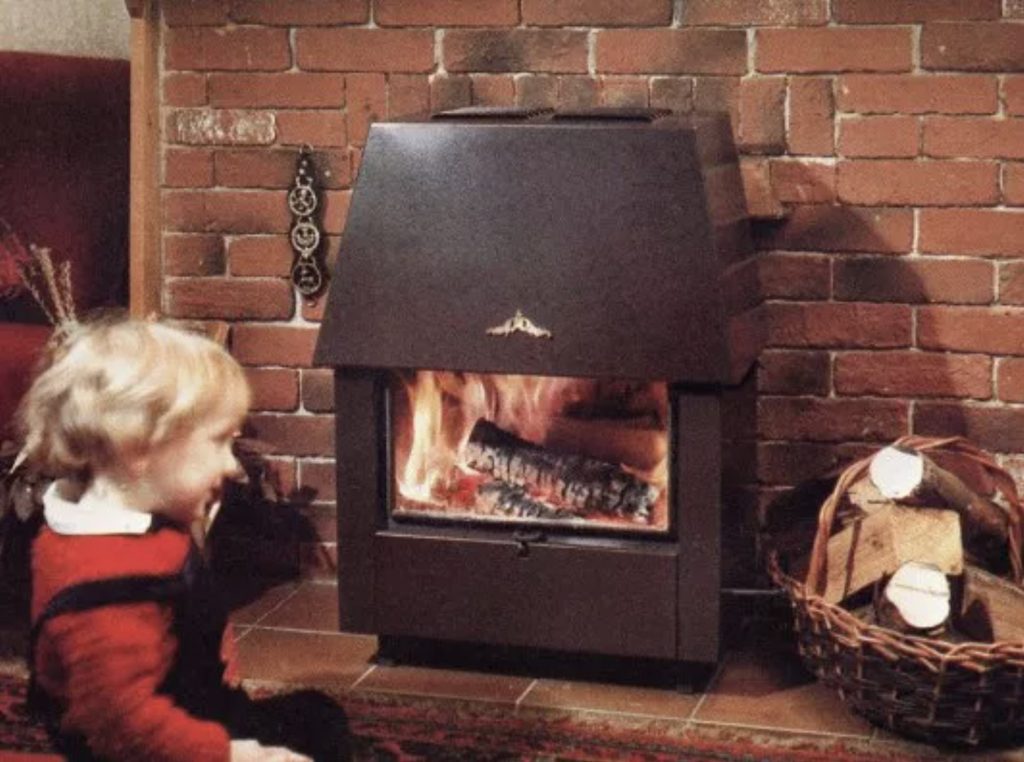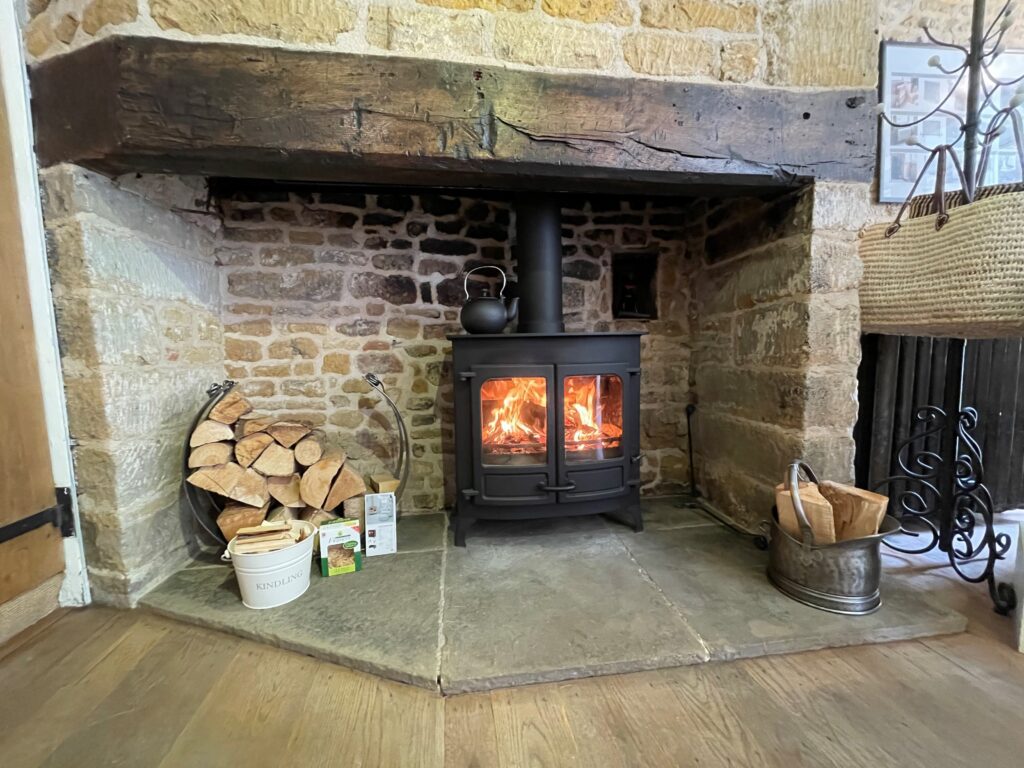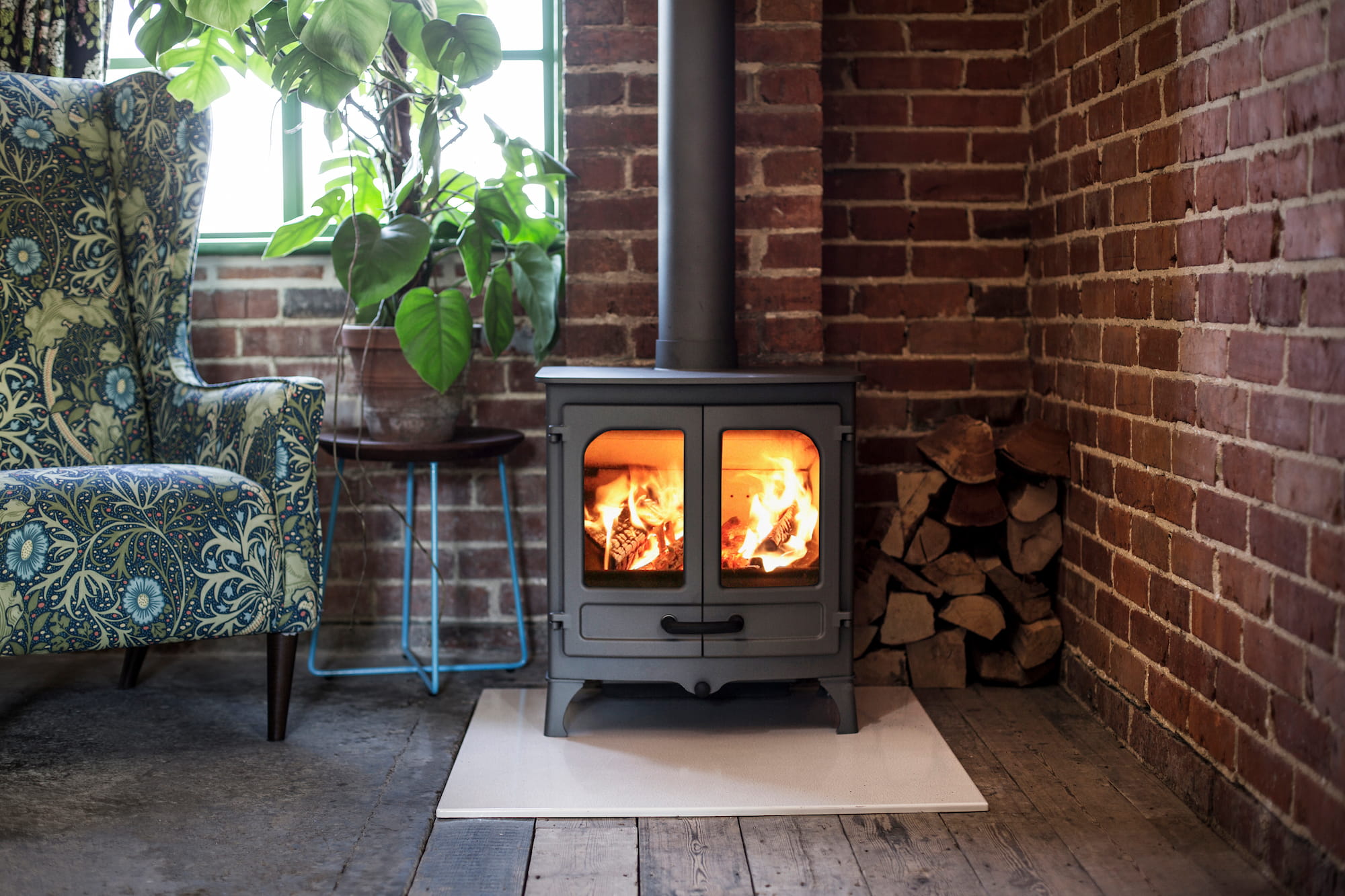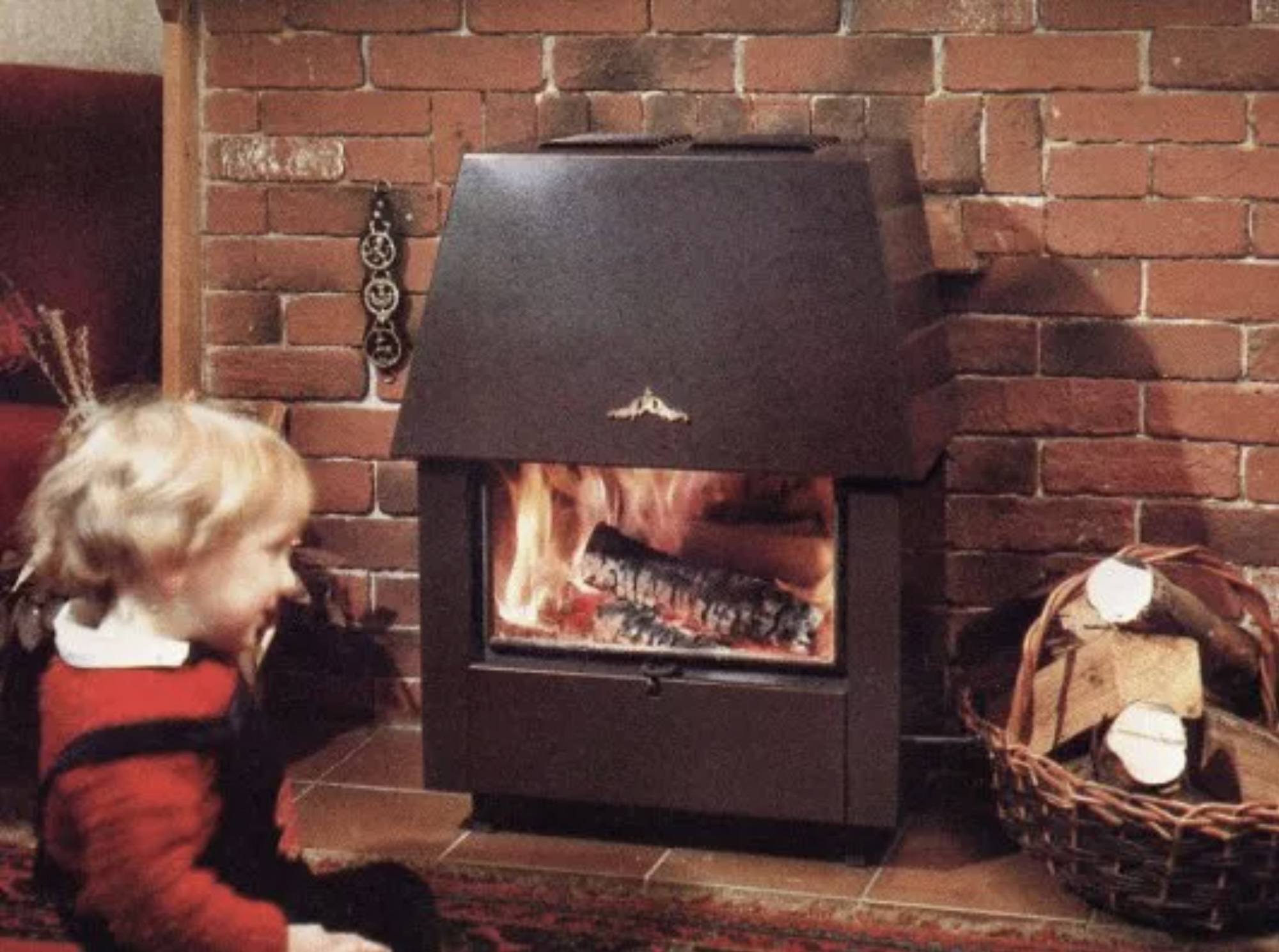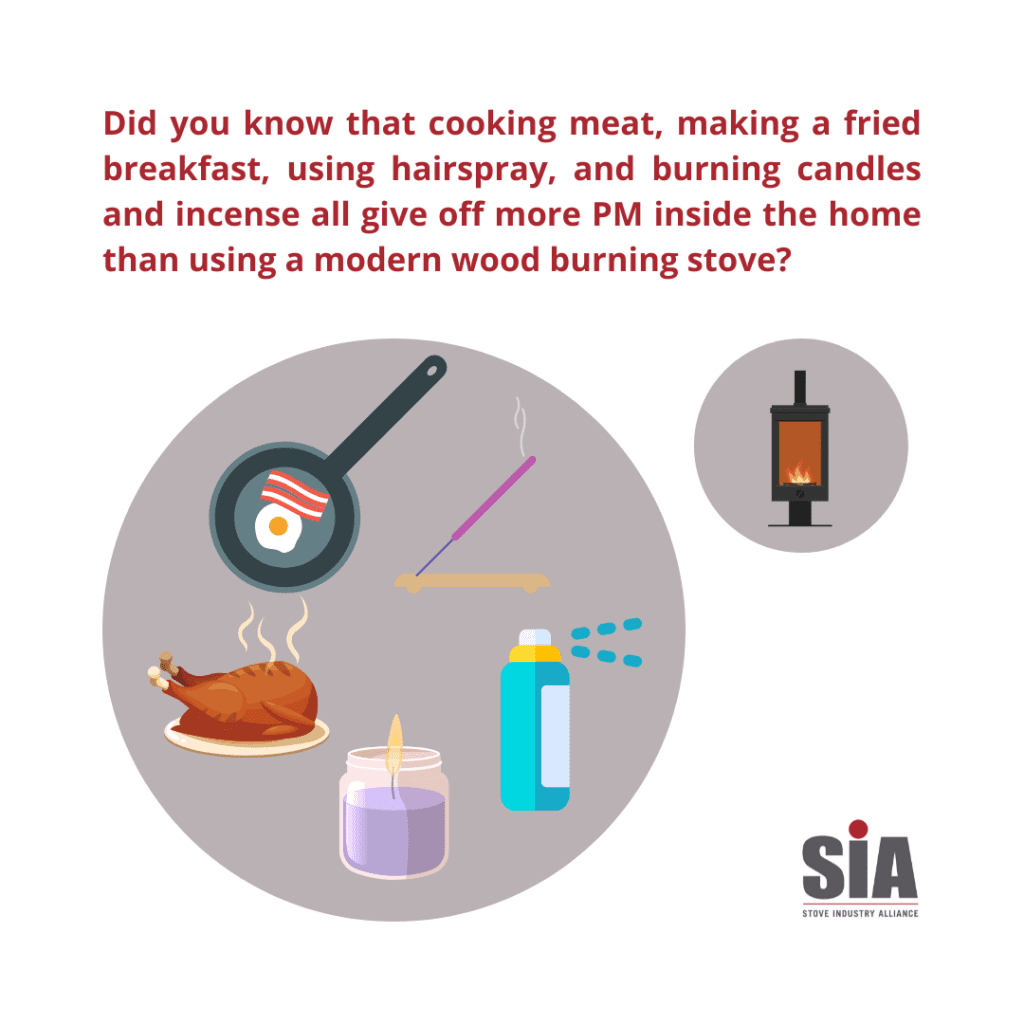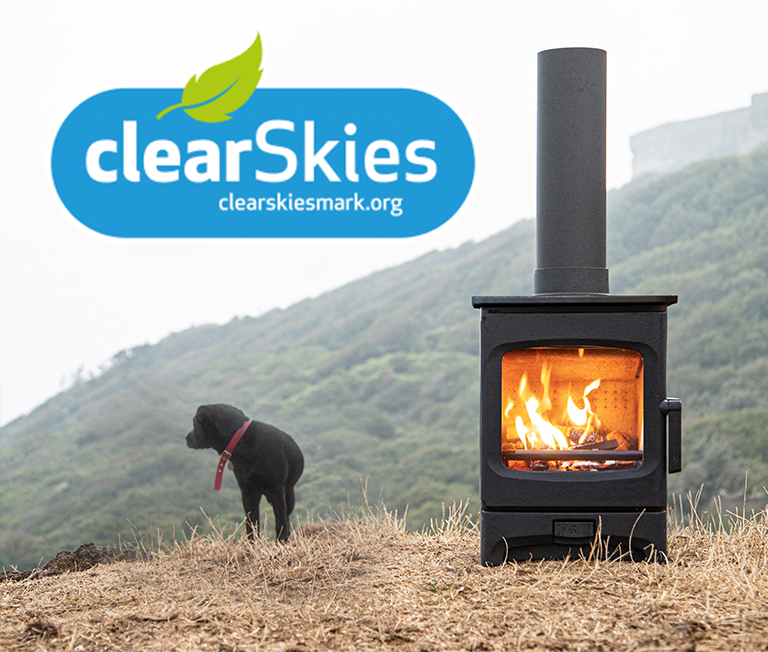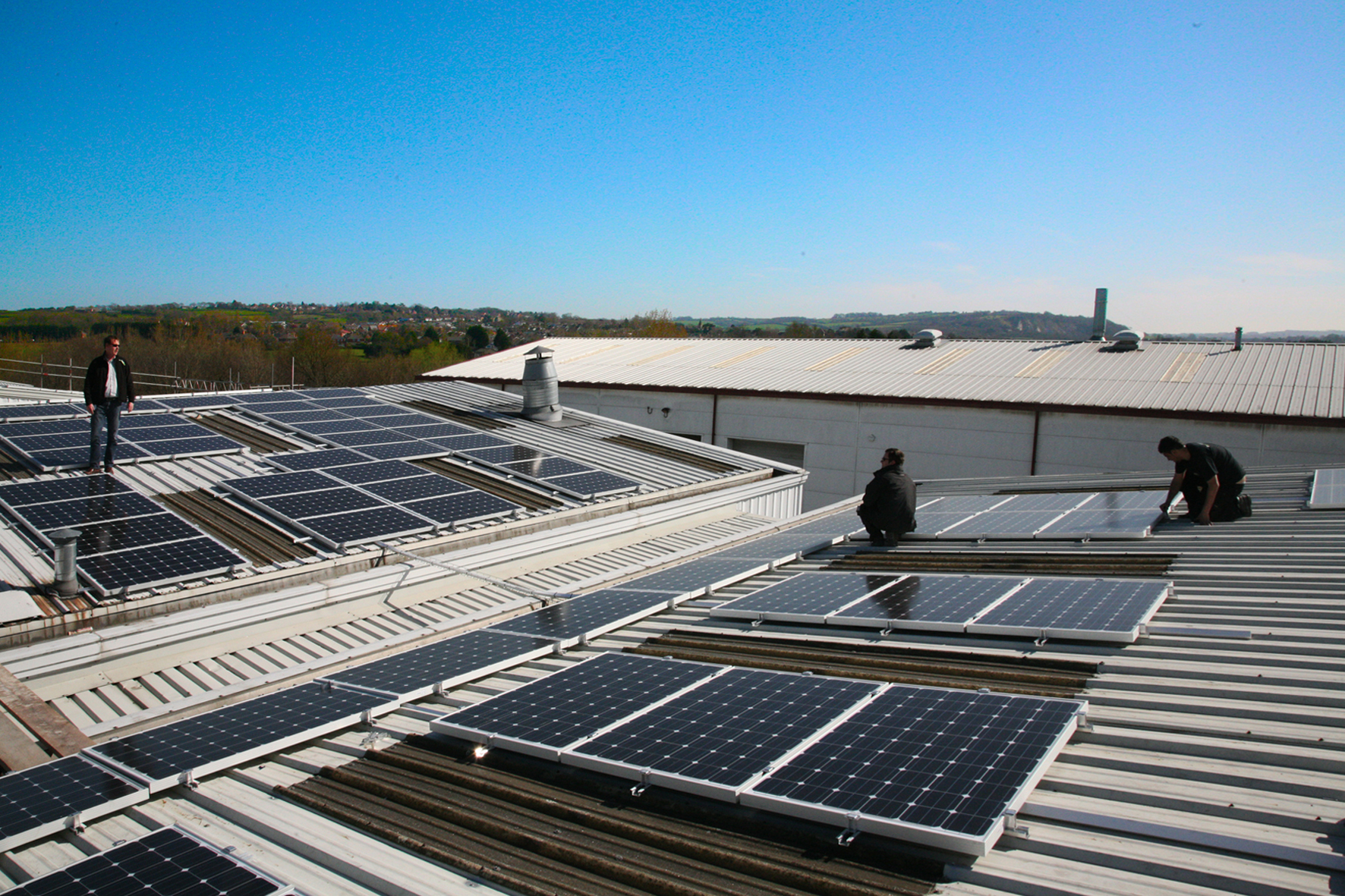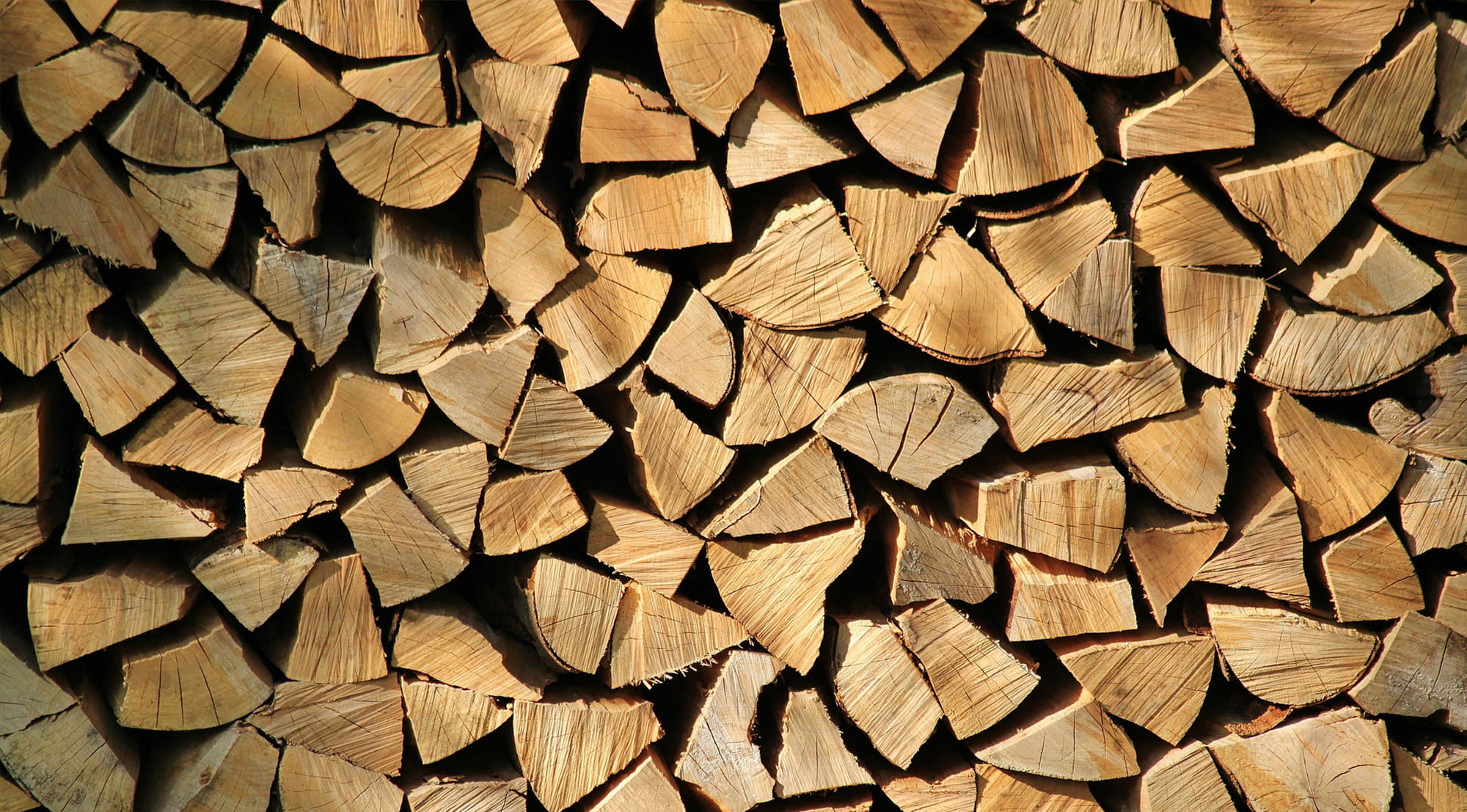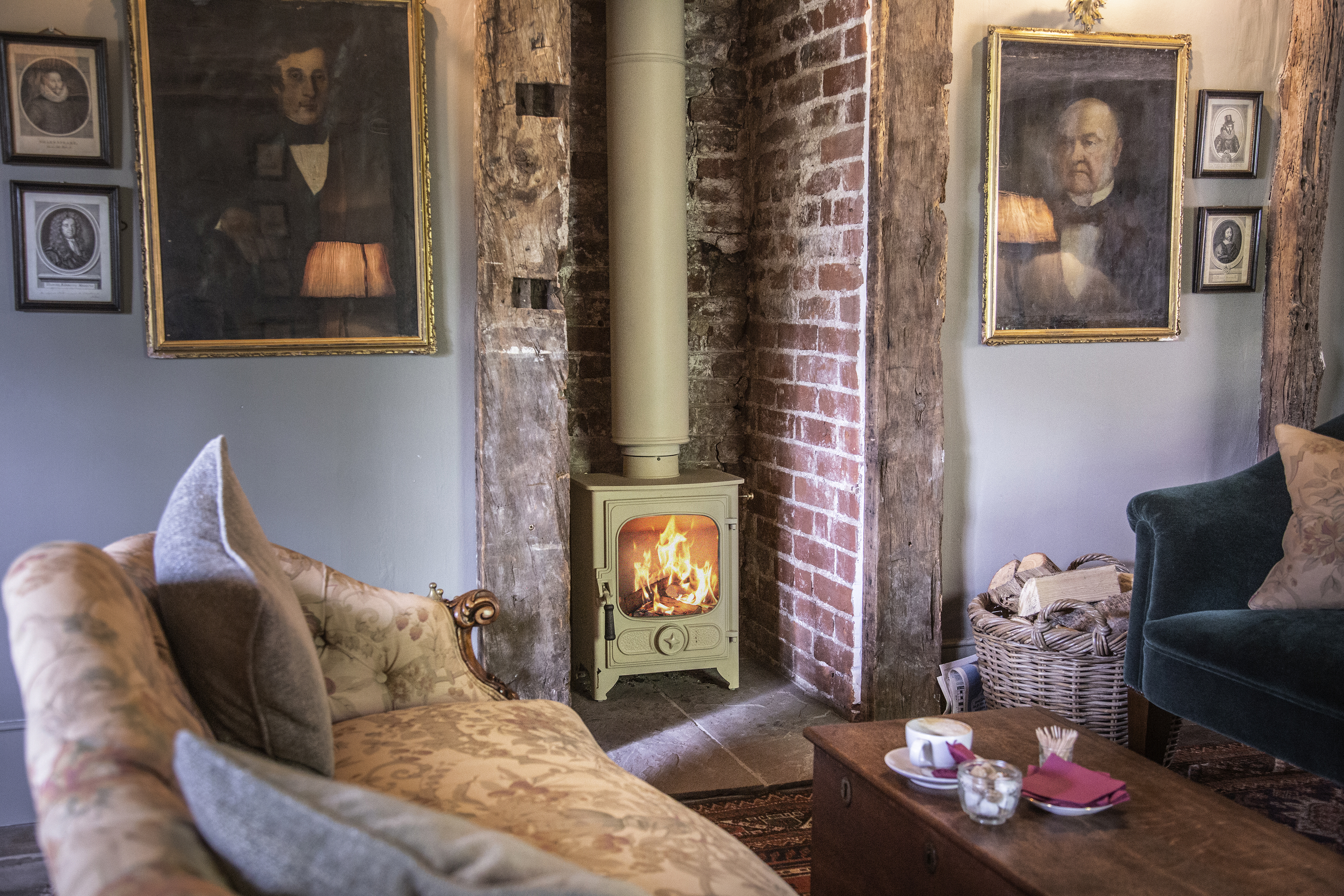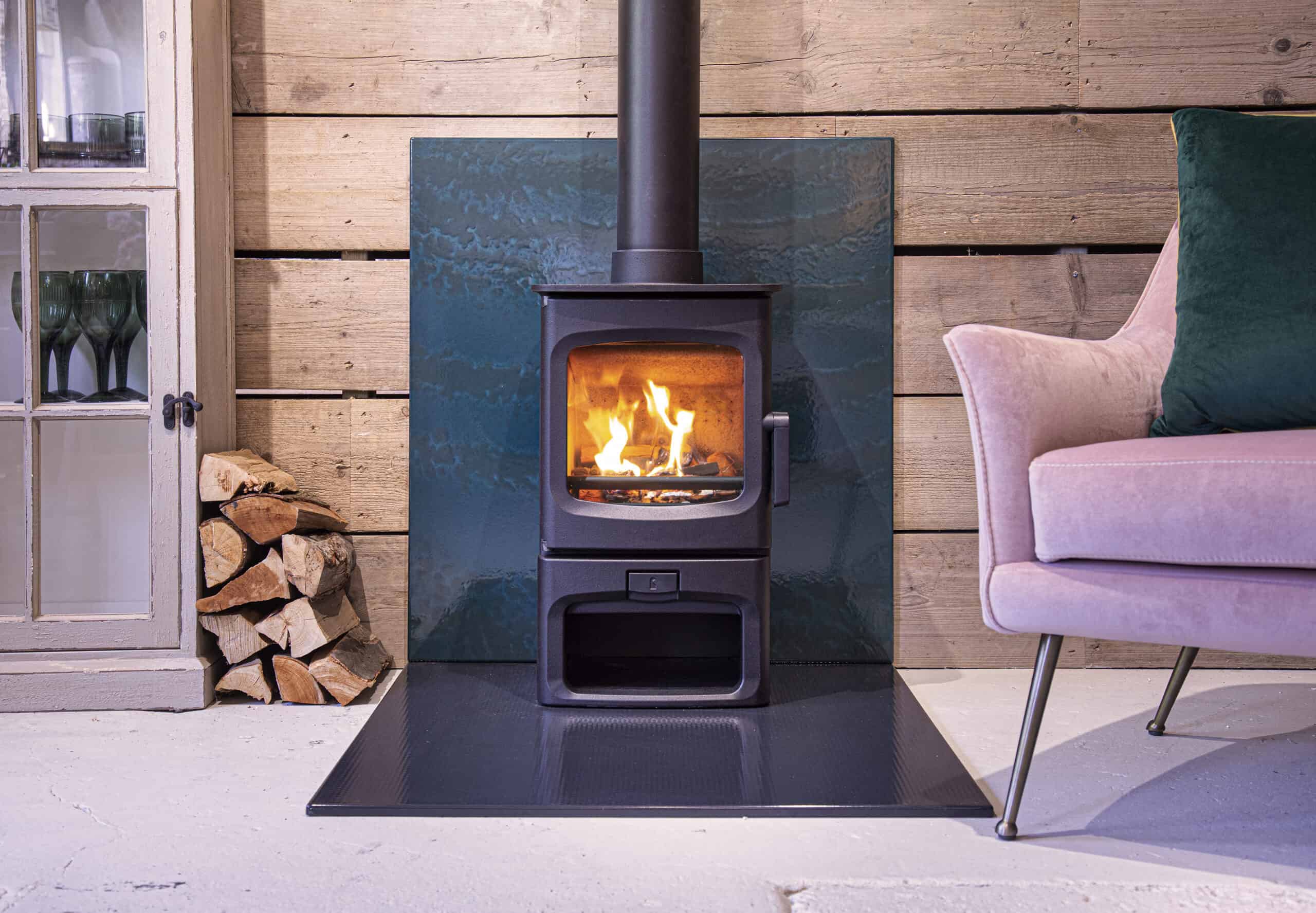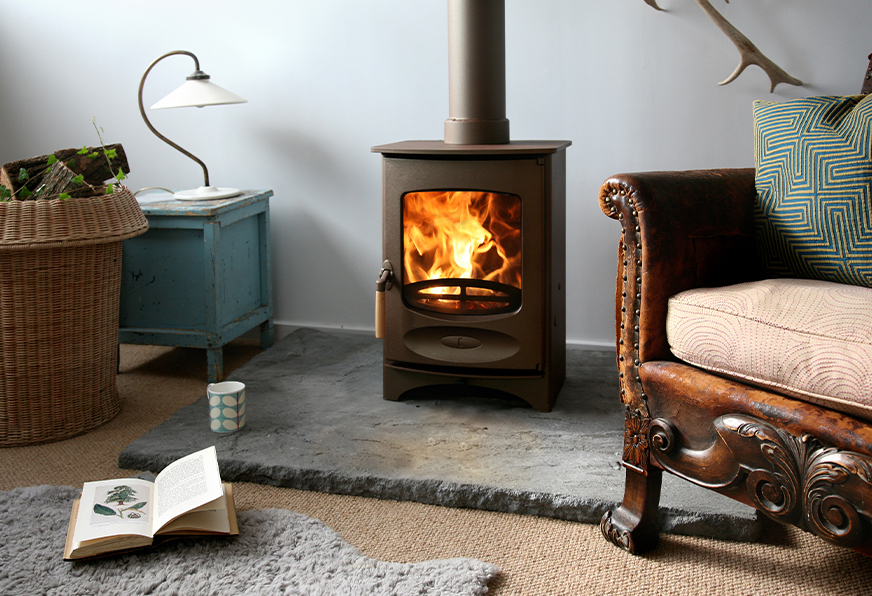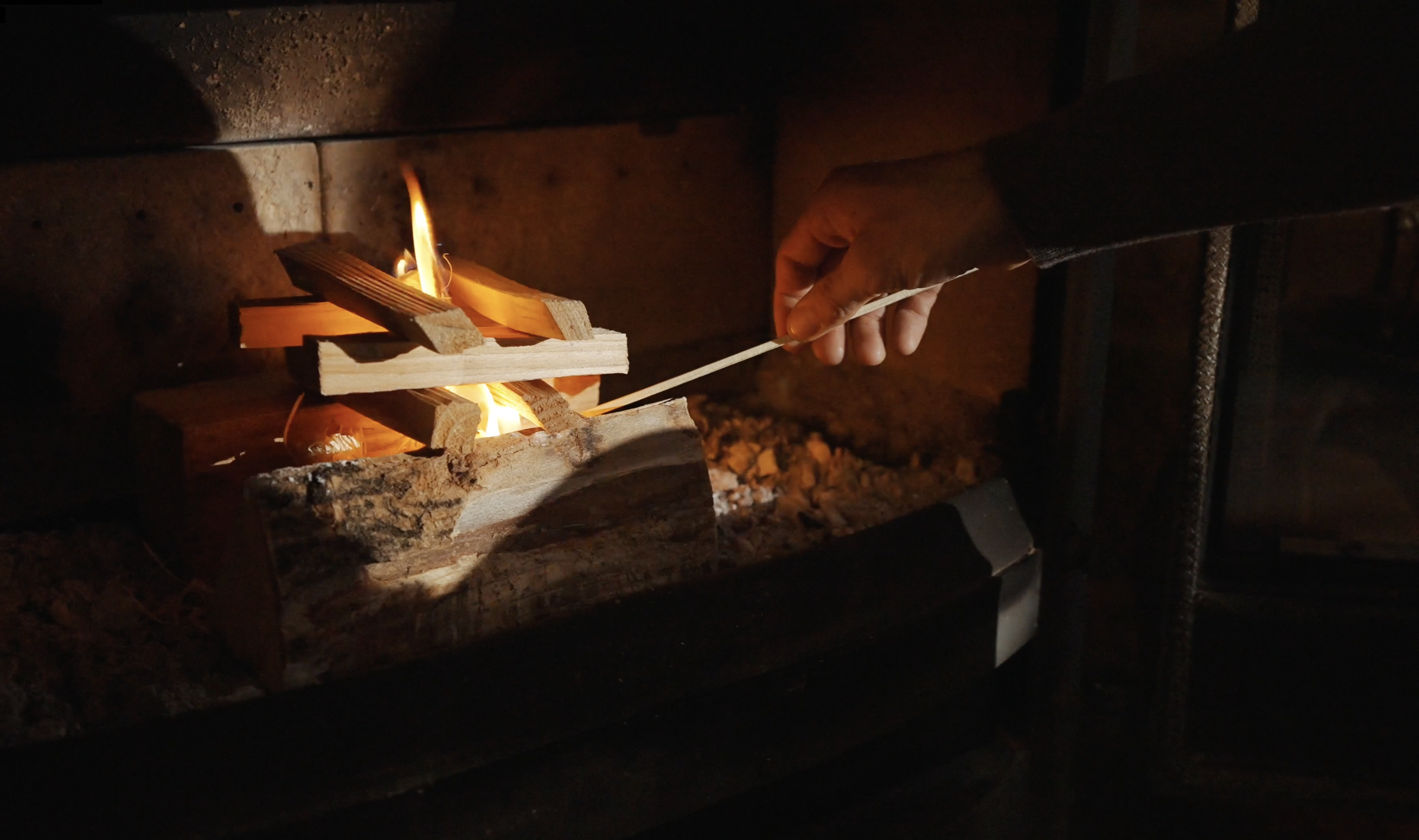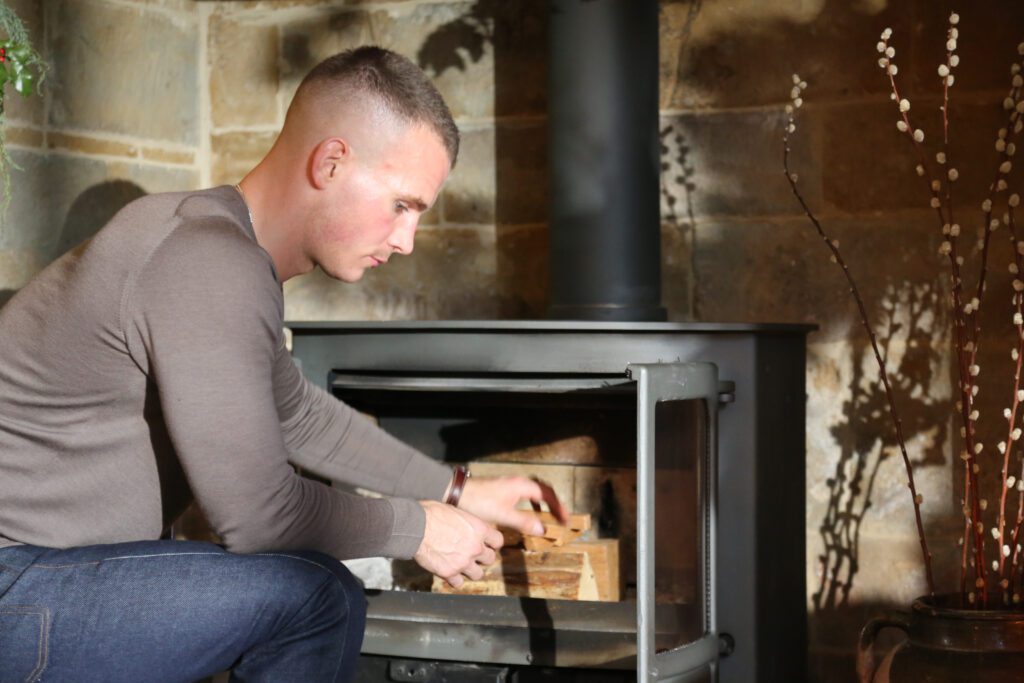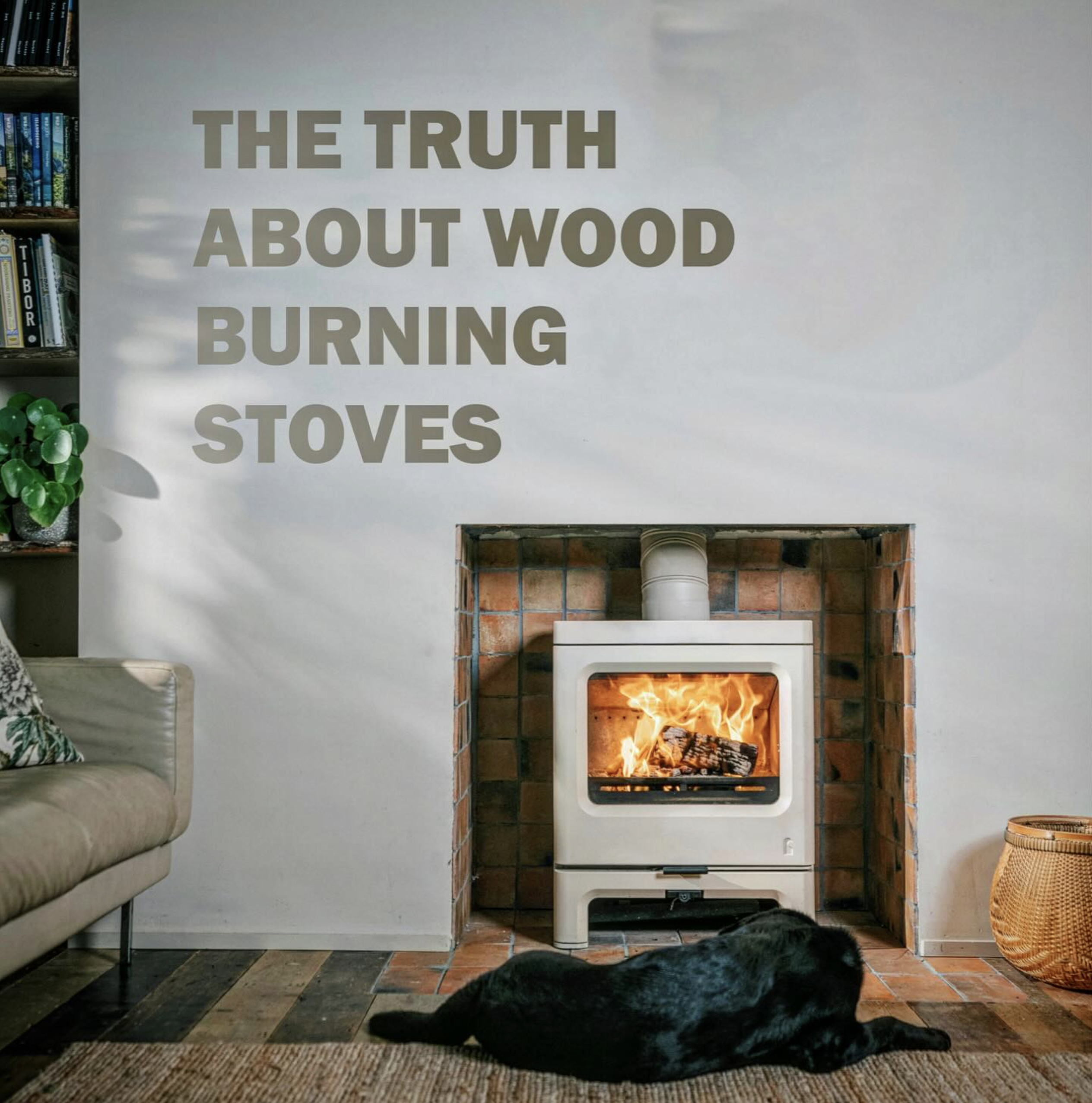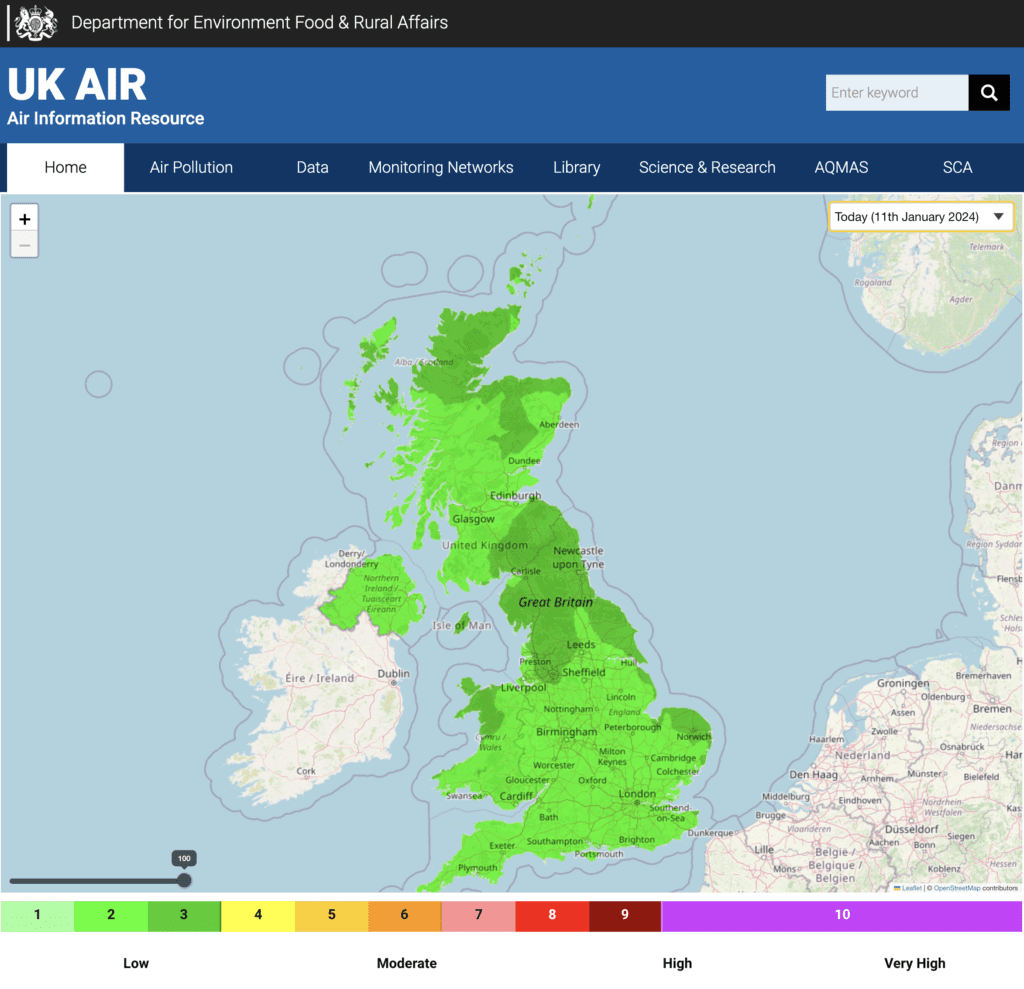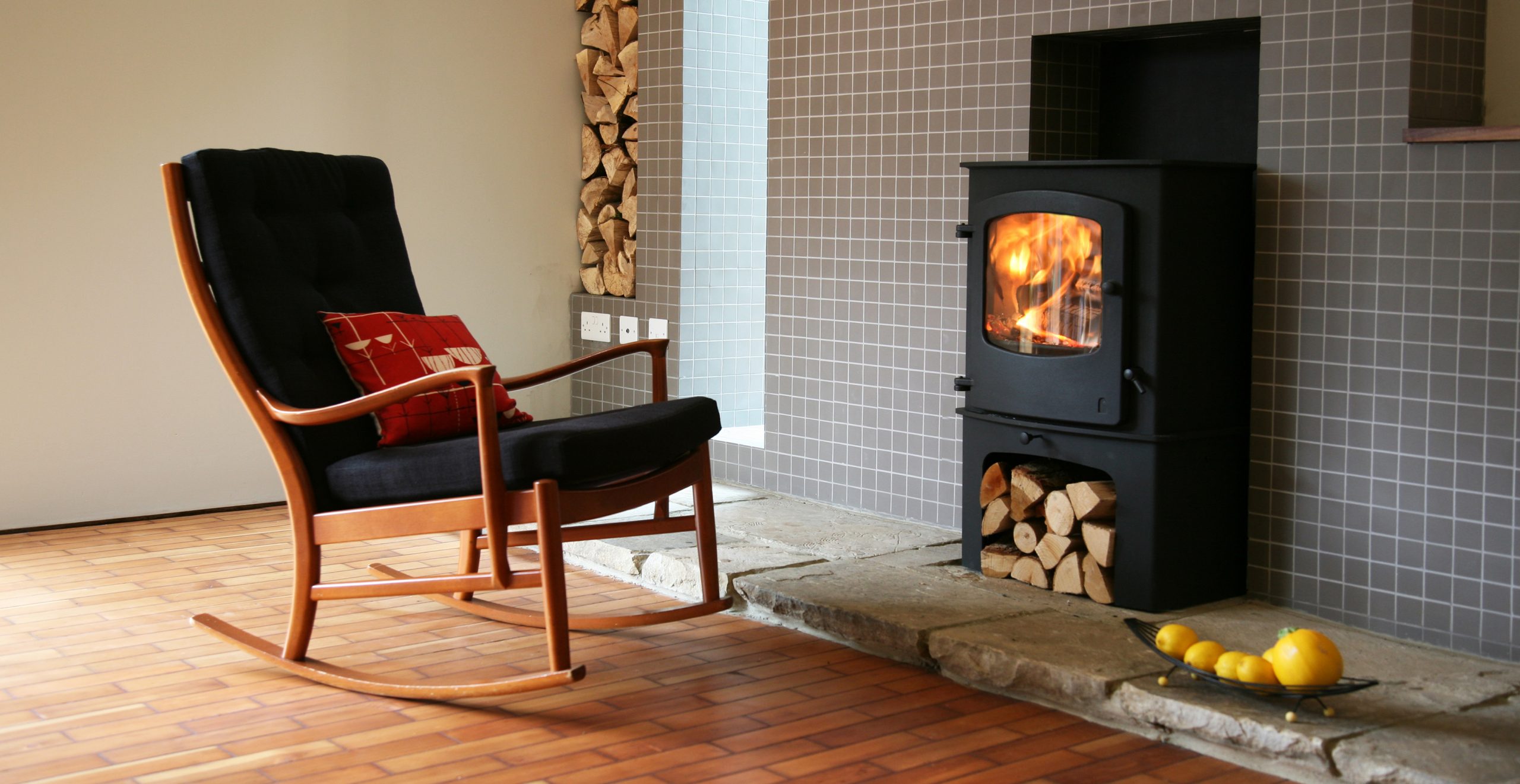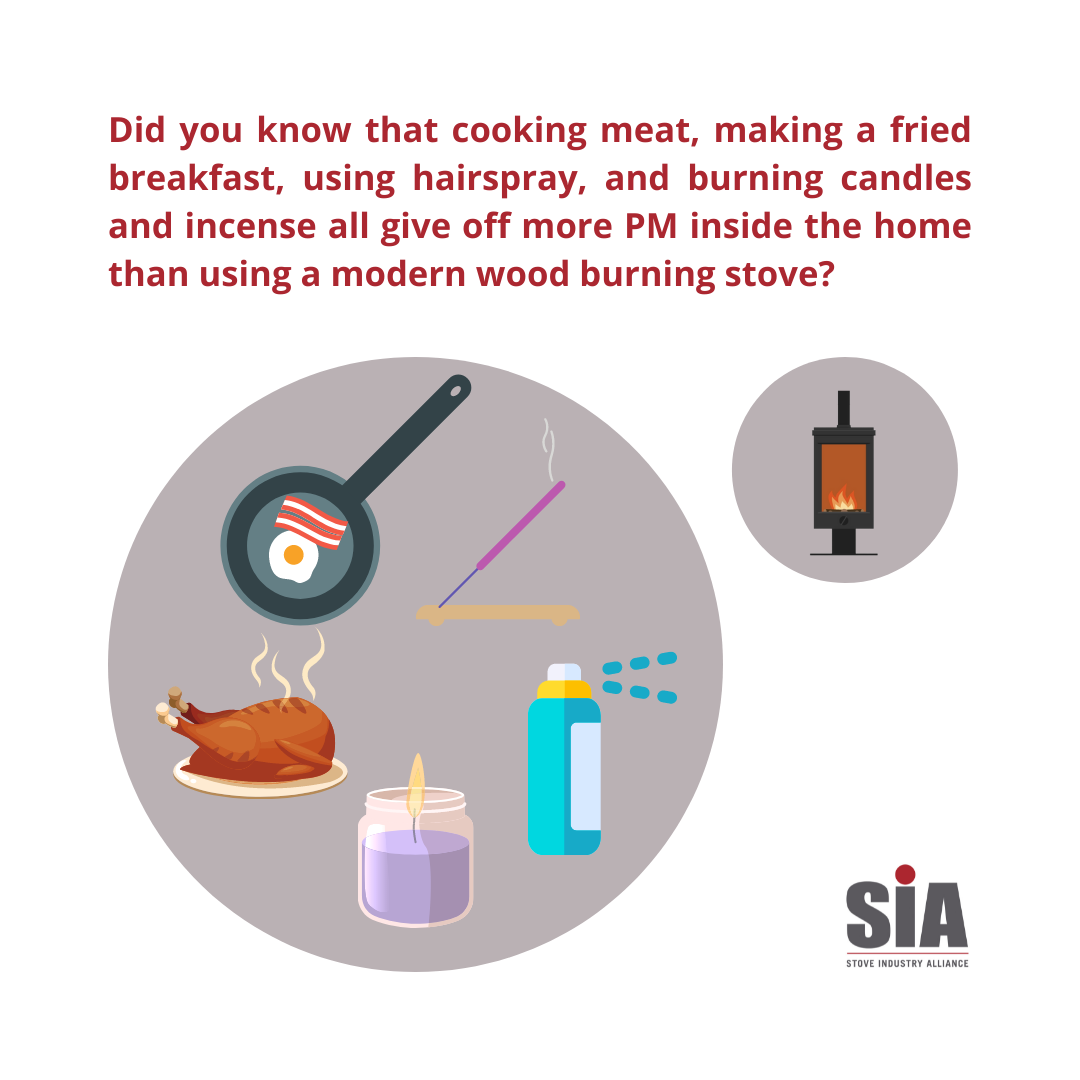At a time of multiple global crises when thousands of people have been thrown into fuel poverty, wood-burning stoves are playing a vital role in helping families survive these troubled times. So, it’s wrong and dangerous for certain newspapers to misrepresent data to blanket criticise a heat source that is helping so many. We agree that updating open fires and old wood-burning stoves will make a massive difference to PM2.5 emissions. However, we ask you to be discerning and take a closer look at the data which reveals that modern ultra-efficient stoves are a big part of that solution.
Our heritage (why we’re passionate about wood-burning stoves)

In 1972, Alfred J Wells and his two sons started a small engineering business in Niton on the Isle of Wight specializing in tractor and machinery repairs. A combination of the 70s oil crisis and the spread of Dutch Elm disease in the UK led the trio to produce a small wood-burning stove as an alternative way to help people heat their homes efficiently.
Our founders were the original environmentalists who knew that responsibly sourced wood is a carbon-neutral fuel that is local, sustainable and reduces the UK’s reliance on fossil fuels. Their cutting-edge stoves were a cleaner and more efficient way to burn than open fires, significantly reducing emissions.
Now in its 50th year, A.J Wells has grown from humble beginnings to making Charnwood a leading global stove brand. We are a proudly British business, sourcing raw materials here in the UK and providing significant local employment. We remain motivated to push innovation well beyond Ecodesign standards and lead industry developments towards manufacturing the most efficient wood-burning stoves possible.
So, is PM 2.5 from wood-burning stoves damaging our health?
Inside the home
PM 2.5, or fine particulate matter, are microscopic particles or droplets present in the air that can be damaging to health when inhaled in sufficient quantity. The World Health Organisation (WHO) has established that the safe daily average limit for PM 2.5 in the environment should be ≤ 10 µg/m3 (1). As a point of reference, the air in Central London averages between 18-25 µg/m3.
A study conducted in the US in 2019 that featured in the Journal of Exposure Science & Environmental Epidemiology, examined 137 homes and found that the average daily level of PM 2.5 particulates in homes was 6-7 µg/m3 while those with a wood-stove was just a fraction more at 6-8 µg/m (2). A tiny difference that is well within the WHO safe level.
This doesn’t surprise us, as we know that a correctly functioning wood stove draws air, smoke and particulates out of a room and up the chimney. However, best wood-stove practices are vital in achieving these low levels and something that we are passionate about teaching our customers and other wood-stove users alike.
Read more about best-wood stove practices to save you money and reduce emissions!

Outside the home (addressing the HGV scare story)
Data is too often twisted and cherry-picked to bolster a blinkered argument. For example, comparing the emission rates between wood stoves and HGVs has caused much unnecessary concern. Claims that a wood-burning stove is worse than 750 HGVs make a good headline but is shockingly misleading.
Closer inspection reveals that their data excludes brake and engine wear and in fact, just one Euro 6 HGV (let alone 750) produces 13 times more PM2.5 emissions than an Ecodesign wood-burning stove over the course of a week’s real-world use. Furthermore, emissions from HGVs are emitted at ground level (nearer head height) while wood smoke is dispersed more safely, higher up via a chimney flue.
The SIA say, “ The claims are based on simplistic calculations using permitted rates of emission and do not consider either real world use or non-exhaust emissions. Furthermore, these permitted emissions rates rely on vastly differing measurement protocols and techniques. It should also be noted that there are several unreferenced assumptions, and the report does not appear to have been independently peer reviewed.”
Read more about wood burning stoves and HGV emissions.
Not all wood-burning is the same
Another common error is to lump in modern efficient stoves with all other forms of domestic wood-burning, including open fires and outdoor bonfires which are far more polluting (3).
However, a high-quality ClearSkies rated stove that is properly installed and serviced and is burning properly seasoned wood fuel, reduces emissions by up to 90% compared with an open fire and by up to 80% compared with older, basic stove models.
Additionally, logs that are sourced from properly managed woodland can be a sustainable practice that works in harmony with our forests. In fact, copsing is key for wildlife proliferation and the future of our woodlands.
When the UK government released its 2020 figures for PM emissions the data showed that the overall percentage of PM2.5 attributable to domestic indoor burning (including open fires and old stoves) was 17%. More importantly, it showed that modern Ecodesign compliant wood burning stoves were contributing just a tiny 1-2% to emissions. (4)
Trusted Chief Medical Advisor Chris Whitty in his latest report acknowledges this saying, “For air pollution emissions, there is substantial difference between the different open fire and stove designs, the age of the appliance and how well maintained it is, and the moisture content of the wood, for those who want to burn wood.” (5)
Therefore, a far more pragmatic and impactful approach to reducing PM 2.5 levels would be to target the significant percentage from open fires and old stoves by actively encouraging people to switch to the very best modern wood-burning stoves!
Also explore everything you need to know about eucalyptus wood.
Not all stoves are equal either (Ecodesign is just a start)

It’s also important to note that not all Ecodesign wood-burning stoves are the same. The figures above are based on the most basic Ecodesign models on the market. However, ClearSkies 5 rated Charnwood stoves are up to 30% more efficient than standard Ecodesign.
That’s a super clean burn! Yet we continue to innovate and believe we can increase efficiency and reduce emissions even further in the near future. After all, 10 years ago Ecodesign was considered difficult to achieve and here we are already beating that standard – we are excited about the innovations to come.
Explore our Ecodesign stove FAQs.
No pure way to keep warm
The uncomfortable truth is that it’s impossible to remove PM 2.5 completely from our lives and a level of risk must be accepted if we are to function as a society. When you consider that roasting a chicken in the oven or even making toast can produce levels of PM 2.5 in the home far in excess of a wood stove, it helps put things in perspective!
It is also clear that, despite how things may be presented, there is no 100% clean and easy home heating solution. While each option has merits, they also have their limitations and challenges.
Find out more on how wood-burning stoves are the most inclusive home heating solution.
Heat Pumps
Heat pumps have been championed by the government as the leading home heating solution, however, they have high start-up costs while full efficiency during the cold seasons cannot universally be reached. Electricity is required to run the heat pumps, which unless 100% renewable means they are not carbon neutral. Even when renewable energy is used, these energy sources also have their limitations and challenges as we detail below. However a great solution can be heat pumps in conjunction with a wood-burning stove – in fact we do this in our offices – as the heat pump provides background heat with the wood-burning stove topping up the heat for the cold days.
Solar panels
Solar panels are dependent on the sun which means that they cannot be fully relied on. Batteries used to store solar energy require lithium mining, while the manufacturing, installation, transportation, and maintenance of solar panels produce 0.18 pounds of CO2 for every kW hour. Solar panels also have toxic metal components containing cadmium and lead and are hard to recycle. (6)
Wind turbines
Wind turbines can be devastating for birds and other wildlife, while they are also weather dependent meaning a constant supply is impossible. There is also much resistance from individual communities due to how they affect the beauty of the countryside.
Nuclear
Modern nuclear plants are a promising option for cleaner electricity; however, they have a difficult past which means there will always be societal resistance and a level of risk will always be there. They also produce highly toxic waste which requires careful management.
Natural gas
Natural gas is a non-renewable fossil fuel and as global stocks continue to decrease, fracking is increasingly being relied upon. Fracking can be highly damaging to the environment and can contaminate local groundwater supplies. It has been blamed for leaking millions of tons of methane, a greenhouse gas more potent than carbon dioxide and is also associated with releasing airborne hydrocarbons that can cause health and respiratory issues.
Also explore log burners vs gas burners.
A hybrid co-heating solution that can help unleash other renewables

We are not saying these technologies are all bad, in fact we have made a significant investment in solar panels on our factory roof producing over 1GW of energy to date. We are just pointing out that all energy sources require compromise and tradeoffs. The key is to maximise the benefits while reducing the negatives.
This is what ClearSkies standards achieve. Unlocking all the benefits of wood-burning while keeping emissions to a bare minimum.
A reminder why wood-burning stoves are a vital part of the equation:
-They can produce heat for long periods, unaffected by weather variations
-Allowing them to work in conjunction with wind, solar and other energies helps make these renewable technologies more viable
-They provide energy independence and security
-Are an ideal emergency/low-frequency heat source
-Allow single-room heating rather than heating the whole house/empty rooms
-Responsibly sourced wood is a carbon-neutral fuel as it gives off the same amount of carbon whether it is burnt or decays naturally. The carbon released from burning wood is balanced out by the carbon absorbed by the tree during its lifetime
-Ability to source fuel locally and without fracking, deep-sea oil drilling and excessive transportation
-A good quality stove can last many decades and provide an affordable source of heat for low-income households
-The right to repair. Most components used within a Charnwood stove are modular and can be replaced when or if they wear out, further extending the life of your stove
-Significant well-being benefits have been reported from wood-stove users
We believe that the optimum path forward is a co-energy solution that involves combinations of renewable technologies AND modern efficient wood-burning. When insufficient sun or wind prevents solar panels and turbines from working, an ultra-efficient wood-burning stove is there to provide a reliable source of heat. People can more confidently embrace renewables when they have a wood-burning stove to fill in gaps of supply.
Let’s pull together and collaborate
We understand the general concern with PM 2.5 emissions and welcome stringent regulations, but it is vital we target the appropriate sources. Wood-burning critics are right to point out the issues with open fires, outdoor bonfires and poor-performing stoves. However, we urge you not to muddy the water by targeting modern ultra-efficient stoves along with them – the differences are vast!
We also fully accept that wood-burning best practices and burning appropriate fuel are vital. That is why, on top of the information we continue to share, we are developing a free training program for all our customers as well as anyone who wishes to inform themselves.
A grown-up debate that is nuanced and considers a wider range of factors is essential. Otherwise, we risk throwing the baby out with the bathwater and finding ourselves in an even more compromised position regarding our energy security.
We can achieve so much more if we come together, and we urge those of you who resonate with this to help spread a positive message.
Why Choose Us?
‘At Charnwood Stoves, our team offer wood burning stoves that represent the pinnacle of quality craftsmanship and innovation. Our stoves are designed with a focus on sustainability, ensuring they not only provide warmth but also minimise environmental impact. With meticulous attention to detail, we strive to create products that exceed expectations in performance and efficiency. Trust Charnwood Stoves for reliable heating solutions that prioritise both your comfort and the planet’s well-being.
(1) https://en.wikipedia.org/wiki/Air_quality_guideline
(2) https://www.nature.com/articles/s41370-019-0151-4
(3) https://stoveindustryalliance.com/domestic-indoor-wood-burning-emissions-significantly-lower-than-previously-thought/
https://stoveindustryalliance.com/sia-response-to-mums-for-lungs-comments/
(4) https://stoveindustryalliance.com/domestic-indoor-wood-burning-emissions-significantly-lower-than-previously-thought/
(5) https://assets.publishing.service.gov.uk/government/uploads/system/uploads/attachment_data/file/1124738/chief-medical-officers-annual-report-air-pollution-dec-2022.pdf
(6) https://solarpowerfocus.com/disadvantages-of-solar-energy/
Other useful sources of information:
https://stoveindustryalliance.com/
https://www.gov.uk/government/publications/summary-results-of-the-domestic-wood-use-survey
https://stoveindustryalliance.com/new-research-finds-almost-half-of-pm2-5-emissions-from-domestic-burning-come-from-outdoor-sources/
https://stoveindustryalliance.com/sia-response-to-mums-for-lungs-comments/
